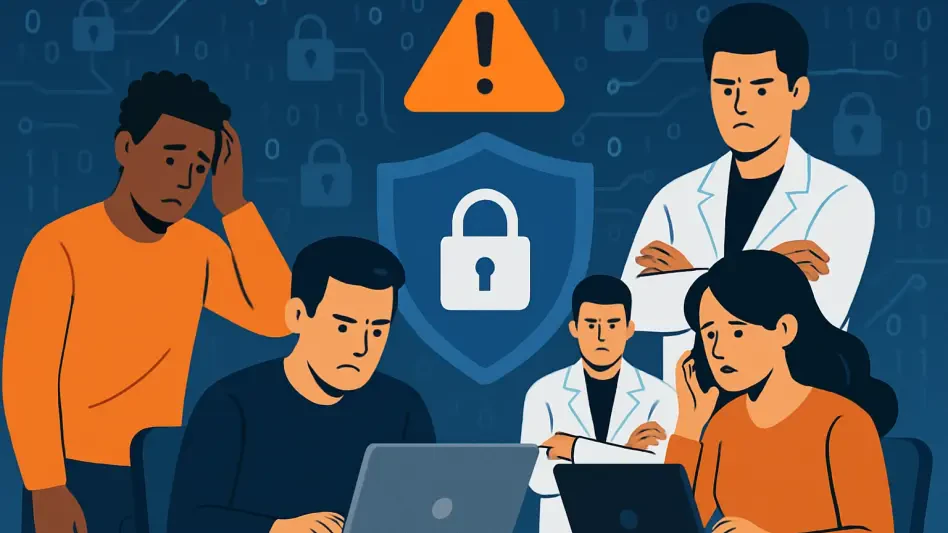In a world increasingly reliant on digital infrastructure, a staggering gap of over 514,000 unfilled cybersecurity jobs in the U.S. paints a chilling picture of vulnerability, threatening every corner of society from small businesses facing relentless ransomware attacks to critical infrastructure at risk of catastrophic breaches. How can a nation protect its digital borders when there aren’t enough warriors to stand guard? This crisis demands urgent action, and the National Institute of Standards and Technology (NIST) has stepped into the fray with a bold strategy to close the gap.
The importance of this issue cannot be overstated. Cybersecurity is no longer just a technical concern; it’s a cornerstone of national security, economic stability, and personal safety. With only 74 qualified workers available for every 100 job openings, as reported by CyberSeek, the deficit creates a dangerous imbalance that cybercriminals are eager to exploit. NIST’s efforts to address this shortfall through innovative programs and substantial funding are a critical response to a national emergency, offering hope for a more secure digital future.
The Alarming Reality of a Half-Million Job Gap
The scale of the cybersecurity workforce crisis is nothing short of staggering. Over half a million positions remain vacant across the U.S., leaving organizations—from local startups to federal agencies—scrambling to protect sensitive data and systems. This isn’t a distant problem; it’s a daily threat that could disrupt everything from online banking transactions to power grid operations. The sheer volume of unfilled roles underscores a systemic challenge that demands immediate attention.
Beyond the numbers, the ripple effects are profound. Businesses suffer financial losses due to breaches, while individuals face identity theft and privacy violations. Even more concerning is the risk to national security, where a single cyberattack on critical infrastructure could have devastating consequences. The gap in skilled professionals amplifies these dangers, making it clear that building a robust workforce is not just an option but a necessity.
Unpacking the National Emergency of Workforce Shortages
Delving deeper into this crisis reveals a harsh truth: the demand for cybersecurity expertise far outstrips supply. CyberSeek data highlights a grim ratio, with only 74 qualified individuals for every 100 open positions. This imbalance leaves critical sectors like healthcare, energy, and government vulnerable to increasingly sophisticated threats, where a single breach can compromise entire systems.
The consequences extend to economic stability as well. Companies unable to secure their digital assets face downtime, legal liabilities, and eroded customer trust. Meanwhile, personal data security hangs in the balance, with millions at risk of exploitation. NIST emerges as a pivotal player in this landscape, leveraging its expertise and resources to spearhead initiatives that address these vulnerabilities head-on through strategic partnerships and education.
NIST’s $3 Million Investment Through the RAMPS Program
In a decisive move, NIST has allocated over $3 million to 17 organizations across 13 states through its Regional Alliances and Multistakeholder Partnerships to Stimulate (RAMPS) program. This initiative now supports 47 communities in 25 states, tailoring solutions to regional needs. The funding targets a range of recipients, such as the AZ Cyber Initiative with $199,100 and Florida International University with $200,000, showcasing a commitment to geographic and institutional diversity.
A key pillar of RAMPS is regional collaboration, uniting schools, employers, and economic entities to design training that matches local industry demands. This ensures that skills taught are directly applicable to nearby job markets. Additionally, the program spans a wide array of training initiatives, from high school curricula to professional boot camps, internships, and hackathons, catering to beginners and seasoned experts alike.
This strategic distribution of funds reflects a nuanced approach. By focusing on localized partnerships, NIST fosters environments where education aligns with employment opportunities. The diversity in training methods ensures accessibility, breaking down barriers for individuals at various career stages and helping to build a pipeline of talent ready to tackle cyber threats.
Expert Perspectives and Complementary Initiatives
Insights from leaders in the field add weight to NIST’s efforts. Rodney Petersen, director of NIST’s National Initiative for Cybersecurity Education (NICE), has emphasized the importance of meeting local employer needs to drive economic growth. His perspective highlights how RAMPS communities are designed to create direct pathways from training to employment, ensuring that skills translate into real-world impact.
Parallel efforts also underscore the urgency of the crisis. The SANS Institute, for instance, plans to train 500 individuals annually by 2027 through fully funded scholarships, providing immersive learning and career support. However, not all initiatives have succeeded—a Department of Homeland Security OIG report criticized the Cybersecurity and Infrastructure Security Agency for mismanaging a $138 million retention program, revealing the critical need for effective execution in workforce development programs.
These varied voices and examples paint a complex picture. While NIST’s focused approach garners praise, the broader landscape shows that success hinges on meticulous planning and accountability. The combination of innovative programs and cautionary tales offers valuable lessons for scaling up efforts to address the shortage.
Practical Steps for a Cyber-Ready Future
Translating NIST’s initiatives into actionable strategies provides a roadmap for building a stronger cybersecurity workforce. One core approach within the RAMPS program is curriculum development, using the NICE Workforce Framework as a benchmark to create tailored programs for high schools, colleges, and professionals. This ensures a consistent standard of education that meets industry expectations.
Another vital component is experiential learning, where internships, apprenticeships, and competitive events like hackathons offer hands-on experience. These opportunities bridge the gap between theory and practice, equipping participants with skills to handle real-world challenges. Additionally, community engagement plays a crucial role, encouraging local businesses and schools to form partnerships that directly address regional workforce shortages.
Stakeholders—whether educators, employers, or policymakers—can replicate these strategies in their own areas by adopting similar collaborative models. By aligning training with local needs and emphasizing practical skills, communities can cultivate talent pools to bolster cybersecurity defenses. This blueprint offers a scalable solution, empowering diverse regions to contribute to national cyber resilience.
Reflecting on Progress and Looking Ahead
Looking back, NIST’s $3 million investment through the RAMPS program marked a significant step in combating the cybersecurity workforce crisis. The focus on regional partnerships and diverse training methods addressed immediate gaps while laying the groundwork for long-term solutions. Collaborative efforts with schools and businesses proved essential in aligning education with industry demands.
Moving forward, the challenge is to sustain this momentum. Expanding funding and refining program oversight are critical to avoid pitfalls seen in other initiatives. Stakeholders are encouraged to advocate for increased resources and to adopt localized training models that can scale nationally.
Ultimately, the path to a secure digital landscape rests on continuous innovation and cooperation. Communities need to prioritize cybersecurity education, while policymakers must ensure accountability in workforce programs. These steps promise to fortify defenses against ever-evolving threats, safeguarding both economic and personal security for years to come.








